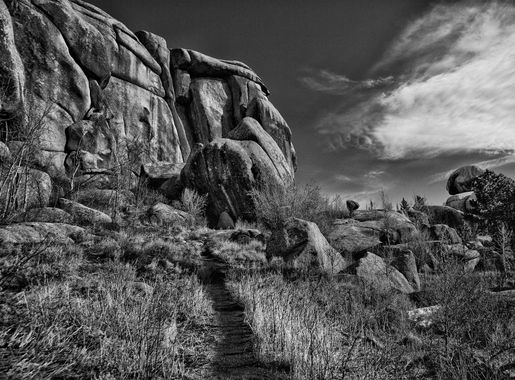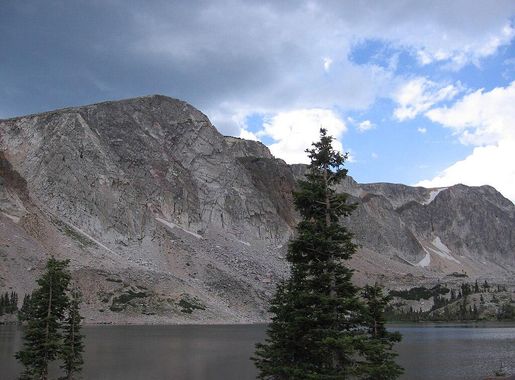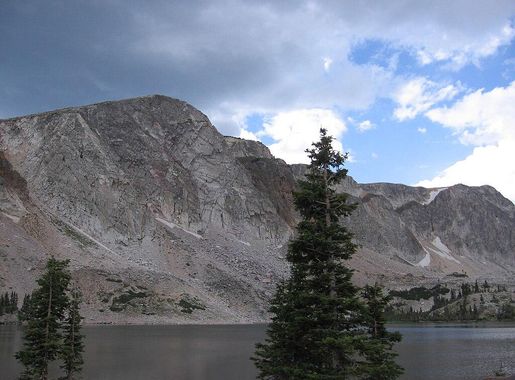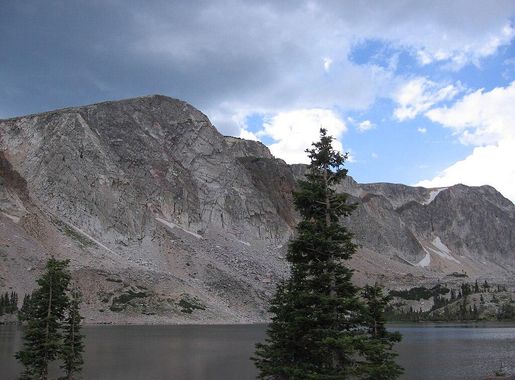
The Wild Beauty of Medicine Bow National Forest
Discover the untamed wilderness of Medicine Bow National Forest, Wyoming – where scenic beauty, outdoor adventure, and rich history come together.
Nestled in the heart of Wyoming, Medicine Bow National Forest offers a blend of scenic beauty and outdoor adventure. Spanning over one million acres, the forest is home to rugged mountains, dense woods, and pristine lakes. It's a haven for nature lovers and outdoor enthusiasts alike. One of the forest's most striking features is the Snowy Range, a series of high peaks that remain snow-covered for much of the year. Hiking through these mountains offers breathtaking views and a chance to see diverse wildlife. From elk to marmots, the forest's inhabitants add to the natural charm. Medicine Bow National Forest is not just about hiking. You can enjoy a variety of activities, such as fishing in crystal-clear lakes, camping under the starry skies, or mountain biking on numerous trails. In winter, the area transforms into a snowy playground perfect for skiing and snowboarding. The forest also has a rich history. It was named after the Medicine Bow River, which was used by Native American tribes for its healing properties. Many historical sites and old cabins dot the landscape, offering a glimpse into the past for curious visitors.
Local tips in Medicine Bow National Forest
- Check weather reports before heading out, especially in the Snowy Range, as conditions can change quickly.
- Pack plenty of water and snacks, as amenities are sparse within the forest.
- Visit in early fall to see the forest’s stunning autumn colors.
- If you plan to fish, ensure you have a valid Wyoming fishing license.
- Cell service is limited, so download maps and information before you go.
The Wild Beauty of Medicine Bow National Forest
Nestled in the heart of Wyoming, Medicine Bow National Forest offers a blend of scenic beauty and outdoor adventure. Spanning over one million acres, the forest is home to rugged mountains, dense woods, and pristine lakes. It's a haven for nature lovers and outdoor enthusiasts alike. One of the forest's most striking features is the Snowy Range, a series of high peaks that remain snow-covered for much of the year. Hiking through these mountains offers breathtaking views and a chance to see diverse wildlife. From elk to marmots, the forest's inhabitants add to the natural charm. Medicine Bow National Forest is not just about hiking. You can enjoy a variety of activities, such as fishing in crystal-clear lakes, camping under the starry skies, or mountain biking on numerous trails. In winter, the area transforms into a snowy playground perfect for skiing and snowboarding. The forest also has a rich history. It was named after the Medicine Bow River, which was used by Native American tribes for its healing properties. Many historical sites and old cabins dot the landscape, offering a glimpse into the past for curious visitors.
When is the best time to go to Medicine Bow National Forest?
Unmissable attractions to see
Abraham Lincoln Memorial Monument
Visit the iconic Abraham Lincoln Memorial Monument in Laramie, Wyoming, a picturesque tribute to the legacy of a great American president.
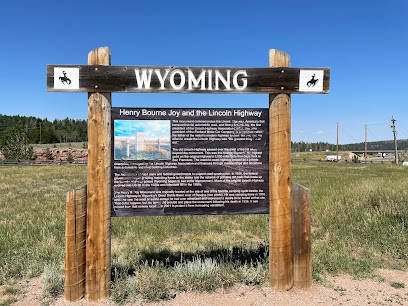
Curt Gowdy State Park
Experience the breathtaking beauty of Curt Gowdy State Park, where adventure meets tranquility in the heart of Wyoming's stunning landscapes.
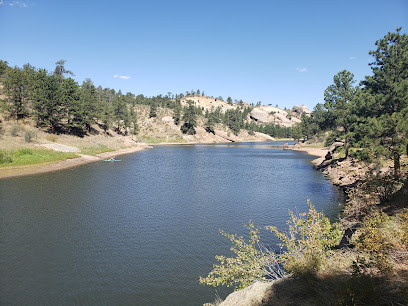
Wyoming Territorial Prison State Historic Site
Explore the rich history of the Old West at the Wyoming Territorial Prison State Historic Site, where tales of infamous outlaws come to life.
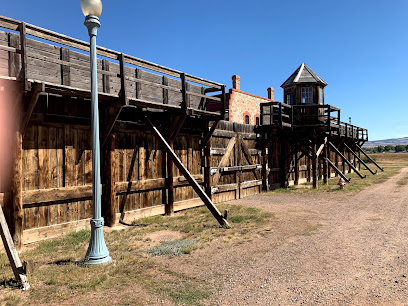
Snowy Range Ski Area
Experience the adventure of winter sports at Snowy Range Ski Area, Wyoming's premier destination for skiing, snowboarding, and breathtaking mountain views.
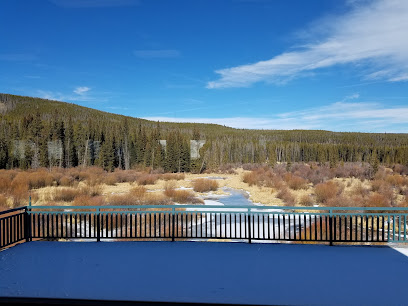
Geological Museum
Explore the Geological Museum in Laramie, Wyoming: A fascinating journey through the earth's history with interactive exhibits and stunning collections.
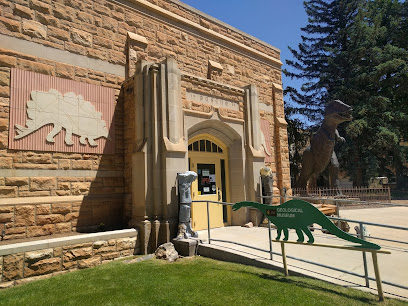
West Lake Marie Trailhead
Explore the West Lake Marie Trailhead in Medicine Bow National Forest, a premier hiking destination with breathtaking views and abundant wildlife.
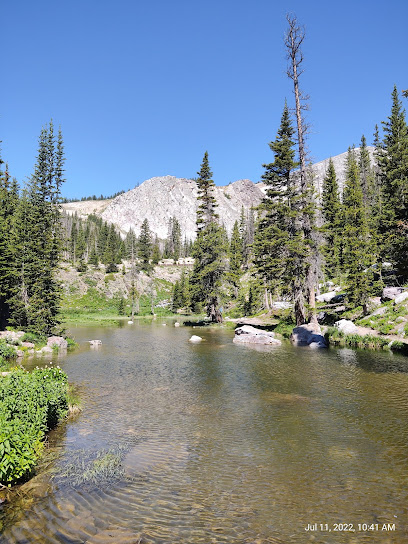
Carbon County Museum
Explore the captivating history of Carbon County at the Carbon County Museum, where local heritage comes alive through engaging exhibits and artifacts.
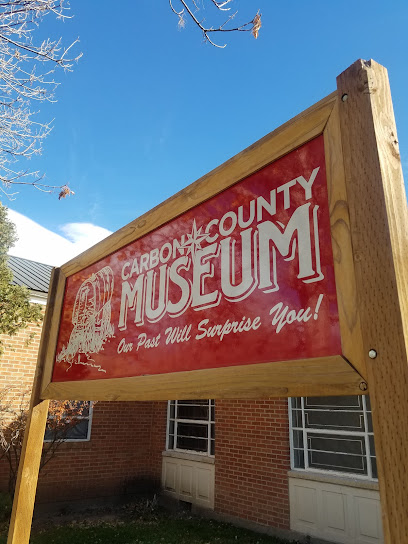
University of Wyoming Art Museum
Discover the rich tapestry of art and culture at the University of Wyoming Art Museum, where creativity thrives in every corner.
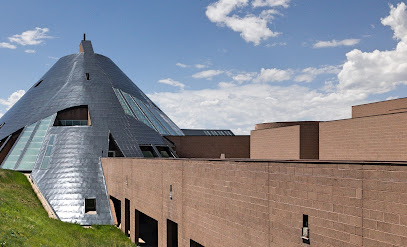
Saratoga Museum
Discover the captivating history and culture of Wyoming at the Saratoga Museum, where the past comes to life through engaging exhibits and events.
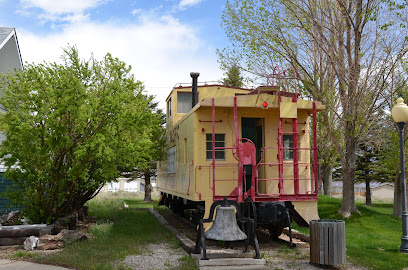
Fossil Cabin
Explore the Fossil Cabin in Rock River, Wyoming, a captivating historical landmark showcasing prehistoric fossils and the natural wonders of our planet.
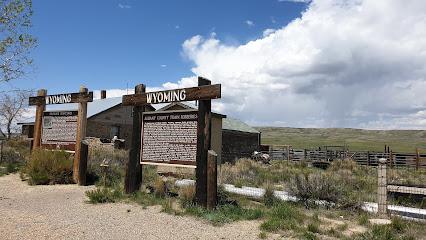
Wick/Beumee Wildlife Habitat Management Area
Experience the natural beauty and diverse wildlife at Wick/Beumee Wildlife Habitat Management Area, a serene refuge in Wyoming's Elk Mountain.
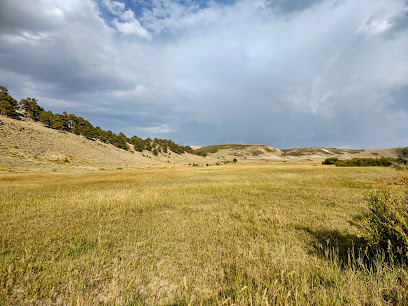
Rob Roy Campground
Discover tranquility and adventure at Rob Roy Campground, a picturesque retreat nestled in the stunning landscapes of Laramie, Wyoming.
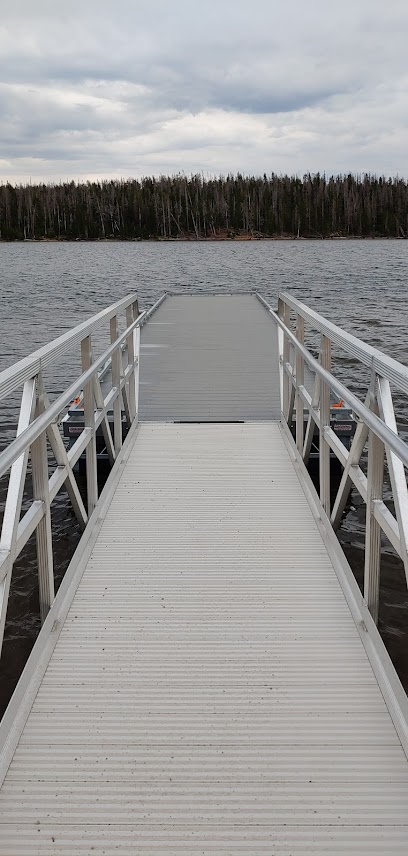
Medicine Bow Museum
Discover the rich heritage of Medicine Bow at the Medicine Bow Museum, a fascinating destination for history lovers and curious travelers alike.
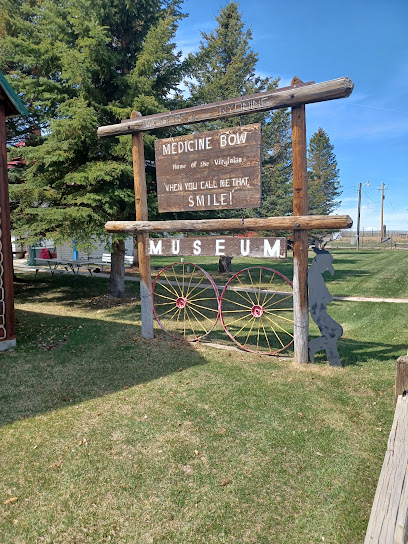
Rocky Mountain Herbarium
Explore the Rocky Mountain Herbarium in Laramie, WY, a unique museum dedicated to the preservation of plant diversity and ecological research.
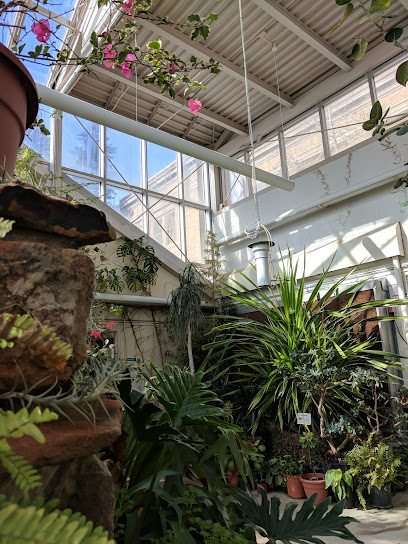
American Heritage Center
Explore the depths of American history at the American Heritage Center in Laramie, WY—where fascinating stories come to life.
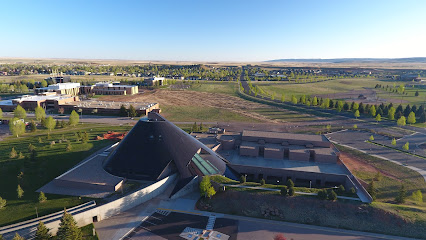
Essential places to dine
Akal Travel Center
Discover Akal Travel Center: A unique truck stop offering delicious Armenian and Indian cuisine along with convenient fueling services.
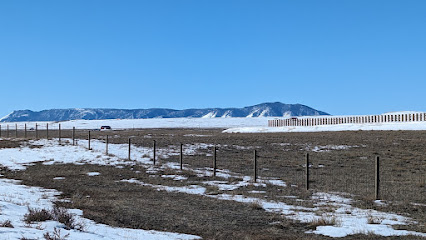
Born In A Barn
Discover Laramie's hidden gem at Born In A Barn, where American grill favorites meet warm hospitality in a charming setting.
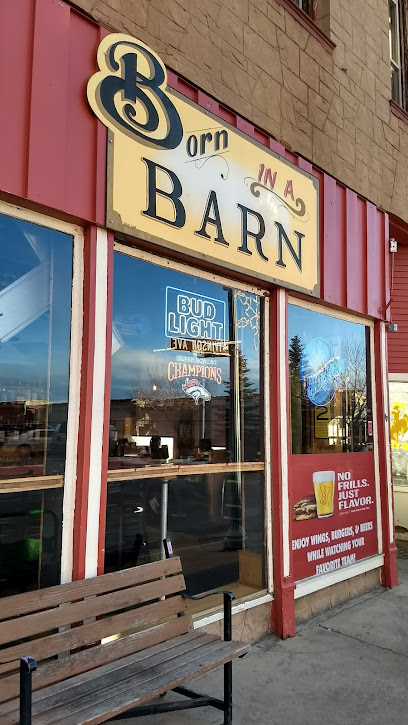
Corona Village
Experience authentic Mexican cuisine at Corona Village in Laramie - where vibrant flavors meet warm hospitality.
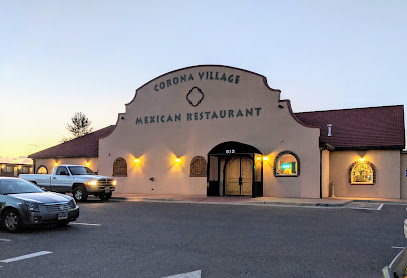
J's Prairie Rose
Experience homestyle breakfasts at J's Prairie Rose - where every bite brings comfort and joy in Laramie, Wyoming.
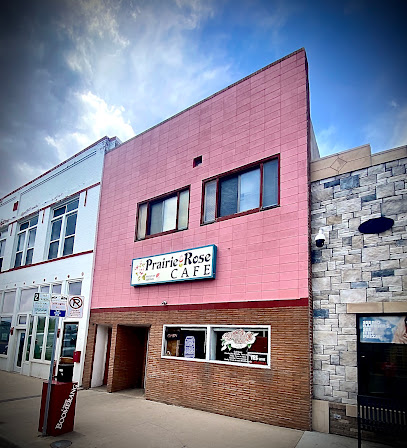
Wyoming's Rib & Chop House - Laramie
Discover Wyoming's Rib & Chop House: where exquisite steaks meet southern barbecue flair in a family-friendly atmosphere.
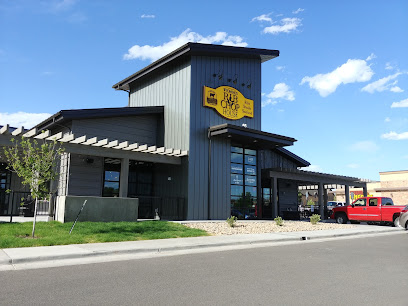
Bunkhouse Bar & Grill
Discover the lively atmosphere of Bunkhouse Bar & Grill in Cheyenne - where delicious American cuisine meets vibrant live music.
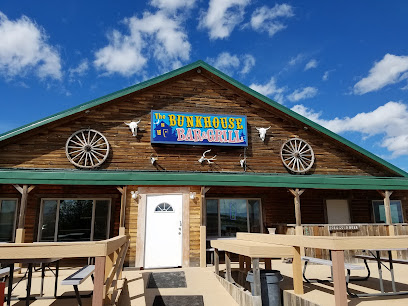
Crowbar & Grill
Discover the vibrant flavors of Crowbar & Grill in Laramie, Wyoming—where great food meets local hospitality in a lively setting.
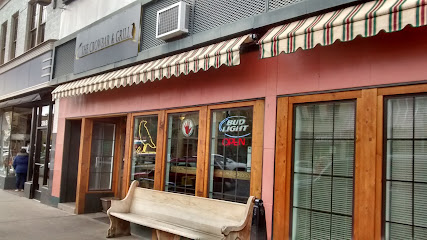
Sweet Melissa
Experience the best of Laramie's culinary scene at Sweet Melissa—a delightful restaurant serving fresh, locally sourced dishes in a charming atmosphere.
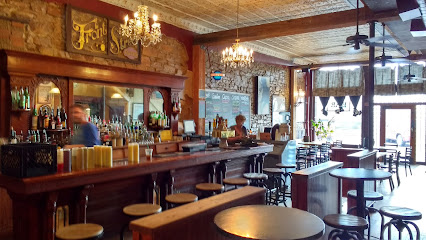
Iron Skillet
Experience hearty American cuisine at Iron Skillet in Laramie, where comfort food meets warm hospitality in an inviting atmosphere.

Wendy's
Savor delicious fast food at Wendy's in Laramie - home of fresh burgers and classic fries that fuel your adventures.

Alibi Wood Fire Pizzaria & Bakery
Experience the best wood-fired pizza and fresh bakery delights at Alibi Wood Fire Pizzaria & Bakery in Laramie, Wyoming.
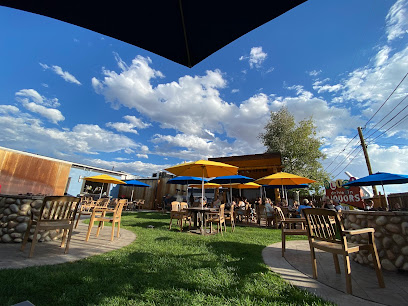
O'Dwyers Public House
Experience the heart of Laramie's culinary scene at O'Dwyers Public House - where flavor meets hospitality.
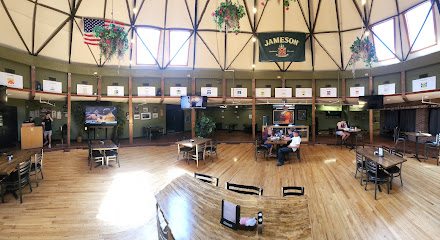
Altitude Chophouse & Brewery
Discover the flavors of Laramie at Altitude Chophouse & Brewery – where hearty meals meet handcrafted brews in a cozy setting.
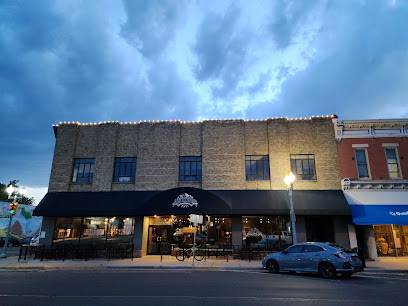
Carl’s Jr.
Discover mouthwatering burgers and fast-food favorites at Carl's Jr., your go-to spot for tasty meals in Laramie.

Cavalryman Steakhouse
Experience the rich flavors of Wyoming at Cavalryman Steakhouse – where history meets exceptional cuisine in Laramie.
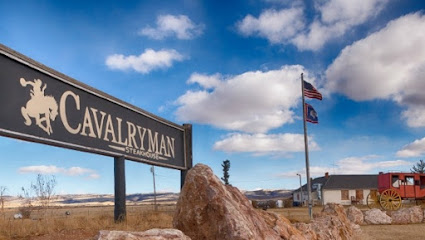
Markets, malls and hidden boutiques
Murdoch's Ranch & Home Supply
Explore Murdoch's Ranch & Home Supply in Laramie for an eclectic mix of clothing, hardware, and sporting goods that captures the spirit of Wyoming.
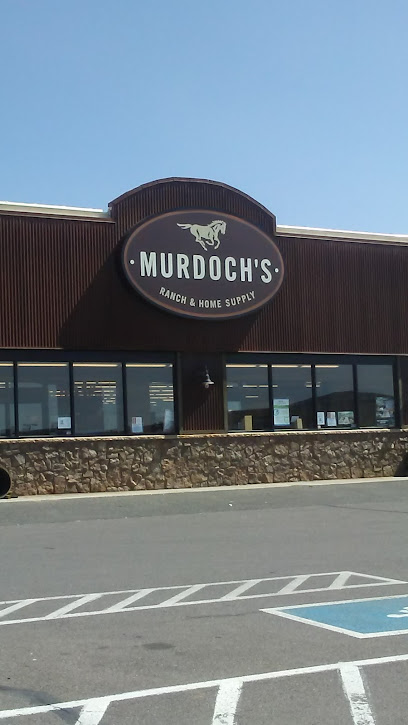
Night Heron Books & Coffeehouse
Discover Laramie's hidden gem where literature meets luscious pastries and aromatic coffee in a cozy setting.
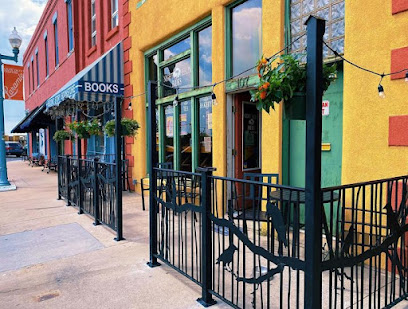
Big Hollow Food Co-Op
Explore local flavors and sustainable products at Big Hollow Food Co-Op in Laramie, Wyoming, a must-visit grocery store for discerning travelers.

BlackMarket Vape & Smoke
Explore BlackMarket Vape & Smoke in Laramie, Wyoming for a diverse selection of tobacco, vape products, and a welcoming community atmosphere.
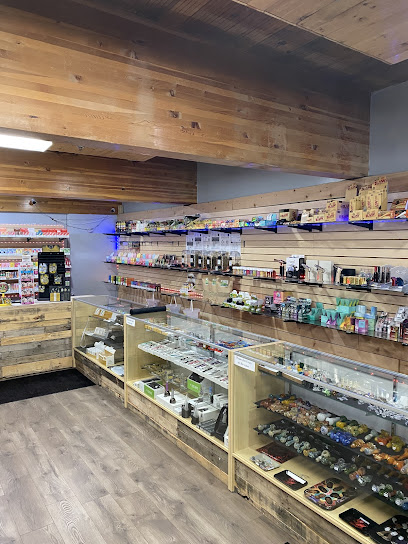
Gateway Plaza
Explore Gateway Plaza in Laramie, WY for a delightful shopping experience featuring clothing stores and local charm in a vibrant atmosphere.
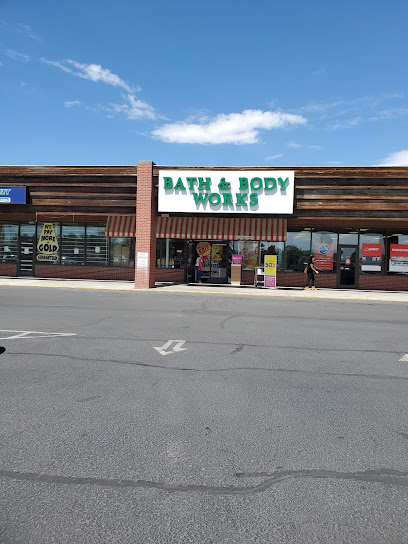
The Bent & Rusty
Explore The Bent & Rusty in Laramie, Wyoming, for unique antique furniture and home decor that adds character to your space.

NU2U
Explore NU2U in Laramie, Wyoming - a unique consignment shop and art gallery offering vintage clothing, jewelry, and local art treasures.

Brown and Gold Outlet
Discover unique apparel and local fashion at Brown and Gold Outlet in Laramie, Wyoming. Explore trendy styles and quality clothing in a welcoming atmosphere.
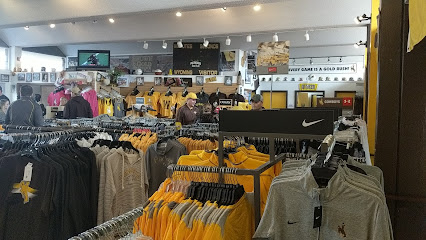
Terrapin Gifts & Novelties
Explore Terrapin Gifts & Novelties in Laramie for unique clothing, vaporizers, and hookah supplies reflecting the local culture.
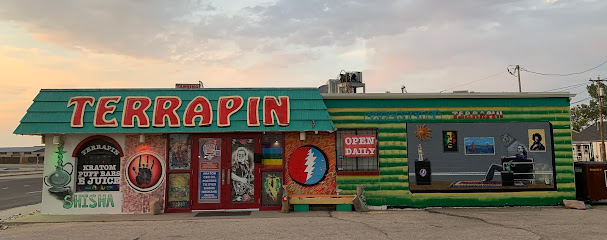
Poppy's Flower Shop & Women's Boutique
Discover floral elegance and stylish finds at Poppy's Flower Shop & Women's Boutique in Laramie, Wyoming, a perfect stop for unique gifts.
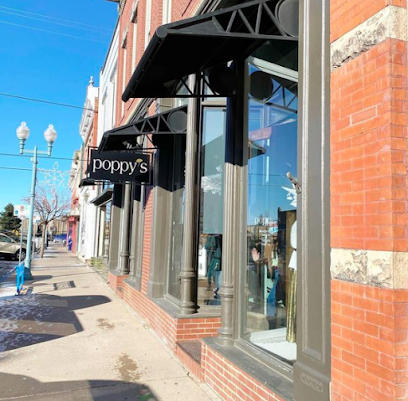
J B's Stop-N-Shop
Discover J B's Stop-N-Shop in Medicine Bow, Wyoming - your friendly gas station and convenience store for all travel essentials.
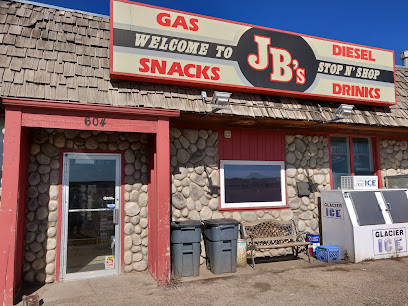
University Store
Explore the University Store in Laramie, Wyoming: your one-stop shop for books, clothing, and electronics with a unique university flair.
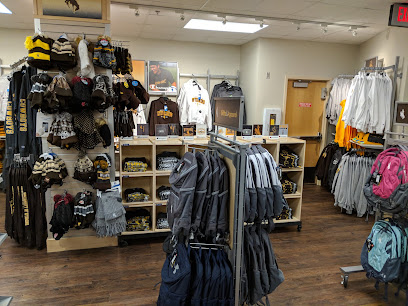
The Curiosity Shoppe
Explore The Curiosity Shoppe in Laramie, WY – your go-to destination for unique gifts, holiday decor, and delightful surprises for every occasion.
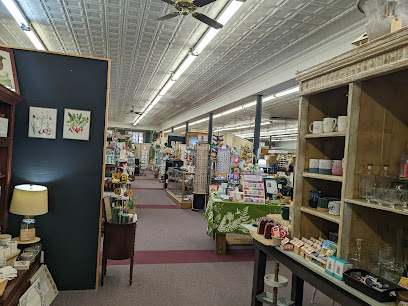
Friendly Store & Motel
Experience the warmth and convenience of Friendly Store & Motel, where local charm meets traveler comfort in scenic Centennial, Wyoming.

Country Junction
Explore Country Junction for unique gifts, local crafts, and delicious homemade ice cream in Laramie, Wyoming.
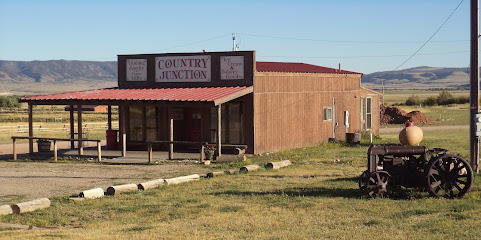
Essential bars & hidden hideouts
Bunkhouse Bar & Grill
Experience the heart of Wyoming at Bunkhouse Bar & Grill, where great food and live music come together in a family-friendly atmosphere.
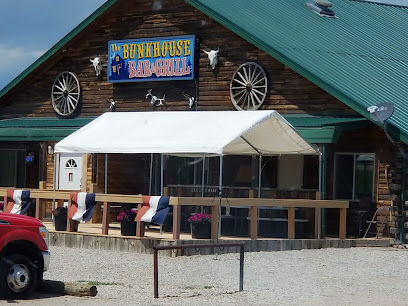
Crowbar & Grill
Experience the heart of Laramie at Crowbar & Grill, where local flavors meet a welcoming atmosphere in Wyoming's vibrant dining scene.
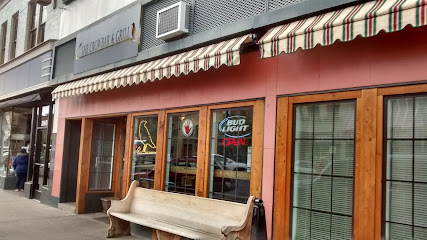
O'Dwyers Public House
Discover the flavors of Wyoming at O'Dwyers Public House, a lively restaurant and bar & grill in Laramie offering delicious meals and local brews.
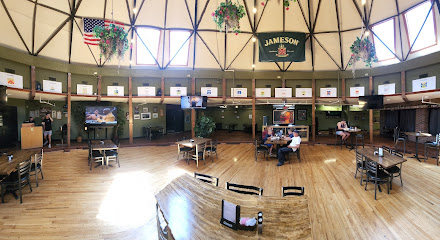
Altitude Chophouse & Brewery
Experience the best of Laramie's culinary scene at Altitude Chophouse & Brewery, where local flavors meet expertly crafted brews.
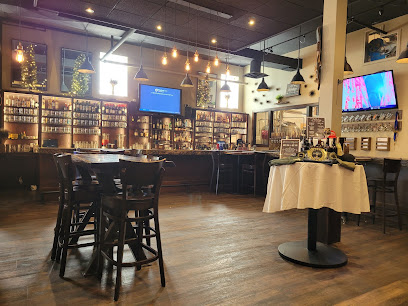
Old Corral Hotel & Steakhouse
Experience rustic charm and delectable flavors at the Old Corral Hotel & Steakhouse, your ultimate Wyoming getaway.

The Library Sports Grille & Brewery
Experience the best of food and craft brews at The Library Sports Grille & Brewery, a unique sports bar and brewery in Laramie, Wyoming.
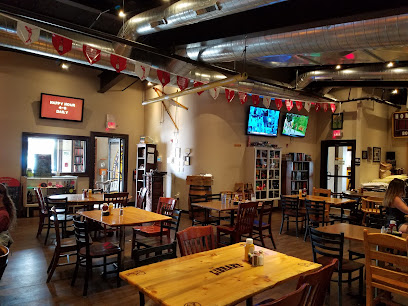
Bear Trap Cafe & Bar
Discover the warmth of American hospitality at Bear Trap Cafe & Bar in Riverside, Wyoming, where flavor meets comfort in a charming setting.
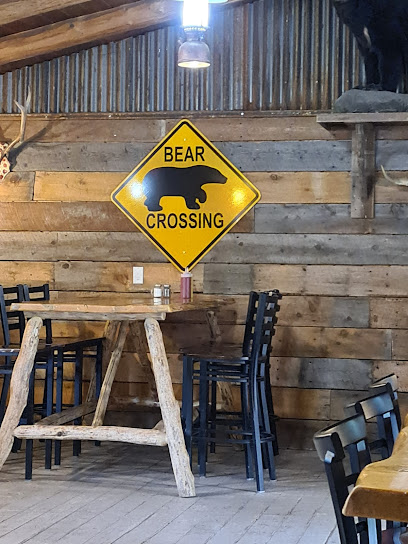
Bear Bottom Bar and Grill
Experience the best of Wyoming's dining at Bear Bottom Bar and Grill, where flavor meets fun in a welcoming atmosphere.
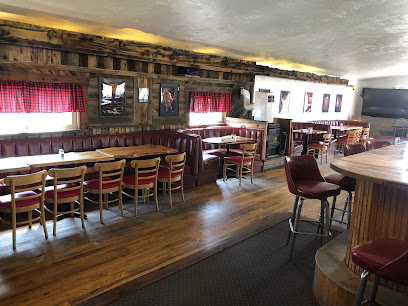
Buckhorn Bar & Parlor
Experience the lively atmosphere and great drinks at Buckhorn Bar & Parlor in Laramie, Wyoming, a favorite among locals and tourists alike.
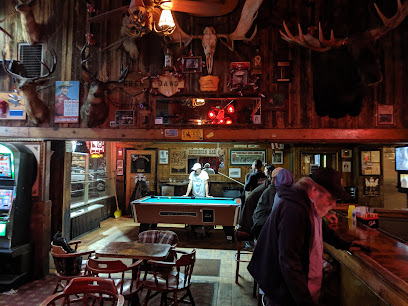
3rd Street Bar
Discover the lively 3rd Street Bar in Laramie, Wyoming—a perfect blend of delicious grilled food and a vibrant bar atmosphere.
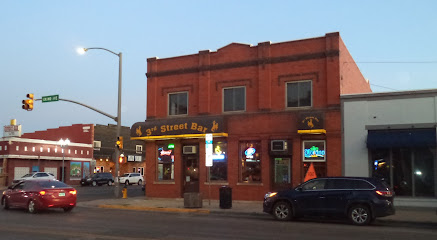
Accomplice Mycro-Pub
Discover Accomplice Mycro-Pub in Laramie, Wyoming – a unique brewpub offering handcrafted beers and delicious food in a vibrant, welcoming atmosphere.
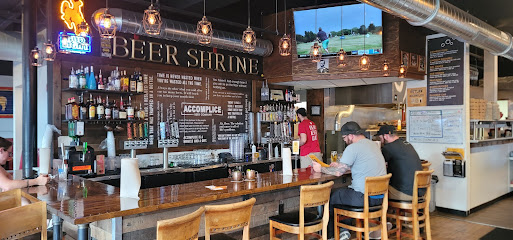
Mingle's Lounge
Experience the lively spirit of Laramie at Mingle's Lounge, where delightful drinks and a warm atmosphere await every visitor.

Whistle Pig Saloon/Beaver Liquor
Discover the lively charm of Whistle Pig Saloon in Saratoga, Wyoming – a perfect blend of local culture and friendly atmosphere.
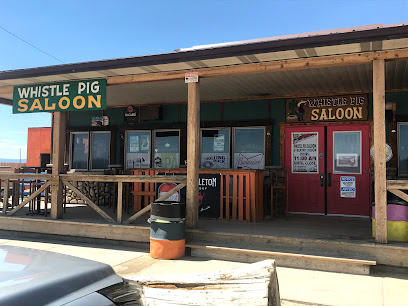
The Cowboy Saloon & Dance Hall
Discover the lively spirit of cowboy culture at The Cowboy Saloon & Dance Hall in Laramie, where music, dancing, and fun come together.

Bud's Bar
Experience the vibrant nightlife at Bud's Bar in Laramie, Wyoming, offering a wide selection of drinks and a welcoming atmosphere for all.
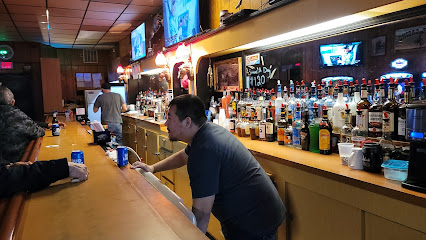
Local Phrases about Medicine Bow National Forest
-
- HelloHowdy
[haw-dee] - GoodbyeSee ya
[see yuh] - YesYep
[yep] - NoNah
[nah] - Please/You're welcomePlease/No worries
[pleez / no wur-eez] - Thank youThanks
[thanks] - Excuse me/SorryPardon me/My bad
[par-dun me / my bad] - How are you?Howdy
[haw-dee] - Fine. And you?Good. How 'bout you?
[good. how 'bout yuh] - Do you speak English?Ya speak English?
[ya speak ing-glish] - I don't understandI ain't catchin' on
[I aint ketch-in on]
- HelloHowdy
-
- I'd like to see the menu, pleaseCan I check out the menu?
[kan eye chek out the men-yoo] - I don't eat meatI don't do meat
[I don't do meat] - Cheers!Cheers!
[cheers] - I would like to pay, pleaseCan I settle up, please
[kan eye set-tul up, please]
- I'd like to see the menu, pleaseCan I check out the menu?
-
- Help!Help!
[help] - Go away!Git!
[git] - Call the Police!Ring the Sheriff!
[ring the sher-uff] - Call a doctor!Get a doc!
[get a doc] - I'm lostI'm turned around
[i'm turned around] - I'm illI'm feelin' poorly
[i'm feelin' poor-ly]
- Help!Help!
-
- I'd like to buy...I'm interested in...
[I'm in-tur-es-ted in] - I'm just lookingJust browsing
[just brows-ing] - How much is it?What's the damage?
[whats the dam-ij] - That's too expensiveThat's steep
[thats steep] - Can you lower the price?Can ya knock it down?
[can ya nok it down]
- I'd like to buy...I'm interested in...
-
- What time is it?What's the time?
[whats the time] - It's one o'clockIt's one
[its one] - Half past (10)Half ten
[half ten] - MorningMornin'
[mornin'] - AfternoonAfternoon
[afternoon] - EveningEvenin'
[evenin'] - YesterdayYest'day
[yest'day] - TodayToday
[today] - TomorrowTomorrer
[tom-er-er] - 1One
[wun] - 2Two
[too] - 3Three
[three] - 4Four
[four] - 5Five
[five] - 6Six
[six] - 7Seven
[sev-en] - 8Eight
[ate] - 9Nine
[nine] - 10Ten
[ten]
- What time is it?What's the time?
-
- Where's a/the...?Where's the...?
[wheres the] - What's the address?What's the addy?
[whats the add-ee] - Can you show me (on the map)?Can ya point it out (on the map)?
[can ya point it out (on the map)] - When's the next (bus)?When's the next bus?
[whens the next bus] - A ticket (to ....)A pass (to ....)
[a pass (to ....)]
- Where's a/the...?Where's the...?
History of Medicine Bow National Forest
-
Medicine Bow National Forest holds a deep-rooted significance for several Native American tribes, including the Arapaho, Cheyenne, and Ute. These tribes relied on the forest for hunting, gathering, and spiritual practices. The name 'Medicine Bow' is believed to have originated from Native American bow-making ceremonies, where wood from the area was used to craft bows considered to possess medicinal properties.
-
The Treaty of Fort Laramie in 1868 was a pivotal moment in the history of the region. This treaty, also known as the Medicine Bow Treaty, was an agreement between the United States and various Native American tribes. It aimed to bring peace between settlers and Native Americans by establishing territorial boundaries and guaranteeing hunting rights within the Medicine Bow area.
-
The late 19th century saw the expansion of the Union Pacific Railroad through the Medicine Bow region. This development played a crucial role in opening up the area to settlers and industries. The railroad not only facilitated transportation but also brought economic growth, leading to the establishment of towns and communities around the forest.
-
In the early 20th century, the timber industry thrived in Medicine Bow National Forest. Logging camps and mills were established, and the forest's abundant resources were harvested to support the growing demand for timber. This period significantly shaped the local economy and landscape, leaving behind remnants of old logging roads and structures.
-
Medicine Bow National Forest was officially established in 1902, following the efforts of conservationists and the federal government to protect the region's natural resources. The forest's establishment marked the beginning of a new era of conservation and sustainable land management, ensuring the preservation of its unique ecosystems and recreational opportunities for future generations.
-
Completed in 1936, the Snowy Range Road (Highway 130) is a scenic byway that traverses Medicine Bow National Forest. This road was constructed as part of the New Deal programs during the Great Depression and provides breathtaking views of the Snowy Range mountains. It remains a popular route for travelers seeking to experience the forest's majestic landscapes.
-
Medicine Bow National Forest has faced numerous wildfires throughout its history. Significant efforts have been made to manage and mitigate the impact of these fires, including the implementation of controlled burns and firebreaks. These conservation efforts are vital to maintaining the health and resilience of the forest's ecosystems.
Medicine Bow National Forest Essentials
-
Medicine Bow National Forest is located in southeastern Wyoming. The closest major airport is Laramie Regional Airport, approximately 45 miles away. From the airport, you can rent a car or take a shuttle service to the forest. Another option is Denver International Airport in Colorado, about 150 miles south. From Denver, you can rent a car or take a bus to Laramie and then proceed to Medicine Bow National Forest.
-
The most convenient way to explore Medicine Bow National Forest is by car. Rental cars are available at nearby airports. Within the forest, there are numerous scenic byways and gravel roads suitable for most vehicles. For those preferring not to drive, guided tours and shuttles are available from nearby towns such as Laramie and Saratoga. Bicycles and ATVs can be rented for exploring trails, but be sure to check for any restrictions on their use in specific areas.
-
The official currency in the United States is the US Dollar (USD). Credit and debit cards are widely accepted at most establishments, including hotels, restaurants, and gas stations. ATMs are available in nearby towns such as Laramie and Saratoga, but it is advisable to carry some cash, especially when venturing deep into the forest where electronic payment options may be limited.
-
Medicine Bow National Forest is generally safe for visitors, but it is important to take standard precautions. Always be aware of your surroundings, especially in remote areas. Wildlife encounters are common, so keep a safe distance from animals and store food securely. Crime rates are low within the forest, but it is still wise to lock your vehicle and secure valuables. Avoid hiking alone, especially at night, and inform someone of your plans before heading out.
-
In case of an emergency, dial 911 for immediate assistance. There are ranger stations and visitor centers throughout the forest equipped to handle emergencies. It is advisable to carry a first aid kit and a map, as cell phone coverage can be spotty in remote areas. For medical emergencies, the nearest hospitals are in Laramie and Saratoga. Always check weather conditions before your trip and be prepared for sudden changes.
-
Fashion: Do wear layered clothing and sturdy hiking boots. The weather can change rapidly, so be prepared for various conditions. Don't wear flip-flops or open-toed shoes when hiking. Religion: Do respect any cultural or spiritual sites you come across. Public Transport: Public transportation is limited; do plan accordingly. Greetings: Do greet fellow hikers and campers with a friendly nod or 'hello.' Eating & Drinking: Do pack out all trash and food waste to keep the forest clean. Don't feed the wildlife, as it can be harmful to them.
-
To experience Medicine Bow National Forest like a local, consider visiting during the fall when the aspen leaves change color, offering breathtaking views. Engage with local rangers and guides who can provide insider knowledge on the best trails and hidden spots. Don't miss the Snowy Range Scenic Byway for some of the most stunning landscapes. Fishing is excellent in the numerous lakes and streams; make sure you have a valid fishing license.
Nearby Cities to Medicine Bow National Forest
-
Things To Do in Steamboat Springs
-
Things To Do in Estes Park
-
Things To Do in Cheyenne
-
Things To Do in Fort Collins
-
Things To Do in Boulder
-
Things To Do in Vail
-
Things To Do in Breckenridge
-
Things To Do in Denver
-
Things To Do in Glenwood Springs
-
Things To Do in Leadville
-
Things To Do in Aspen
-
Things To Do in Rock Springs
-
Things To Do in Riverton
-
Things To Do in Sterling
-
Things To Do in Monument

